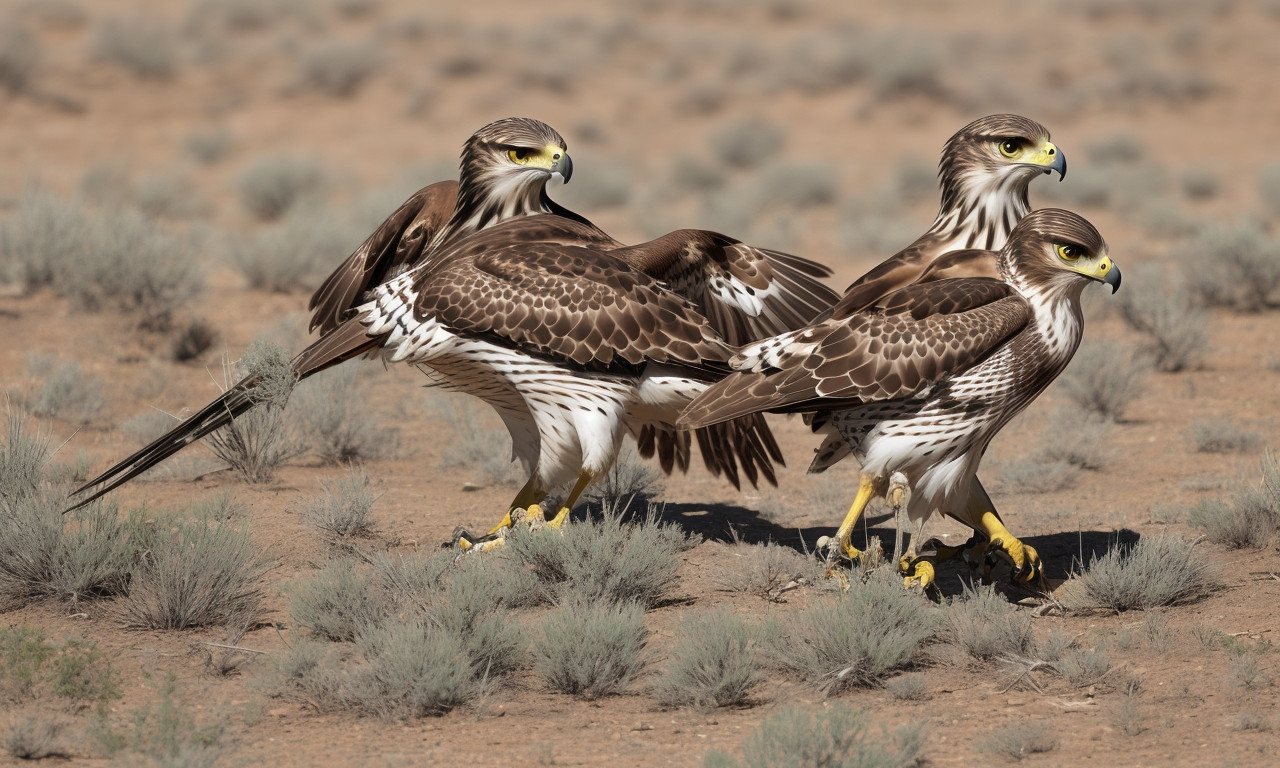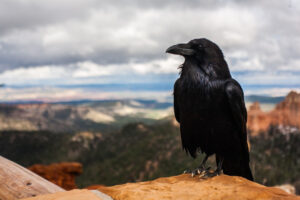The open skies of New Mexico, with their swirling thermal currents and breathtaking landscapes, are a haven for various raptors that command the air with grace and precision. Among these aerial predators, hawks stand out as some of the most majestic and awe-inspiring birds. Their keen eyes scan the terrain below as they effortlessly glide over the desert scrub and alpine forests that characterize the region, making them a cornerstone of the Southwest’s biodiversity.
Embarking on a journey to discover the hawks of New Mexico is an unfolding adventure steeped in the allure of untamed wilderness and the intricate balance of ecosystems. These birds of prey uphold a critical role in the natural world, acting as both guardians and sentinels of their domain. Their presence symbolizes the wild spirit of the Southwest, a timeless emblem of freedom and resilience.
Join us as we delve into the world of New Mexico’s hawks, exploring their habits, habitats, and the sheer splendor they add to the Southwest’s rich tapestry of life. Whether you’re an avid birdwatcher, a nature enthusiast, or simply have an appreciation for the marvels of the avian world, this exploration will unveil the mysteries and wonders of these spectacular birds.
Related article; hawks in arkansas
The Hawks of New Mexico: A Diverse Avian Tapestry
New Mexico is home to an abundance of raptor species, but hawks hold a special place in the hearts of bird lovers and conservationists alike, for their commanding presence and vital ecological roles. Unpacking the diversity of these raptors provides not just a glimpse, but an immersive experience into their world.
Related article; ducks in georgia
Uncovering the Species: Identifying Hawks in the Wild
The classification of hawks is a testament to evolutionary artistry, with species in New Mexico encompassing different genera, each with unique attributes. Among the most recognizable are the Red-tailed Hawk, the Cooper’s Hawk, and the Northern Goshawk – each with distinct flight patterns, calls, and behaviors that make them fascinating to observe.
Related article; texas ducks
- The Red-tailed Hawk (Buteo jamaicensis) is among the most prevalent and easiest to spot due to its size and characteristic reddish tail.
- The Cooper’s Hawk (Accipiter cooperii), smaller and more elusive, is known for its agility in flight, often seen darting through wooded areas.
- The Northern Goshawk (Accipiter gentilis) presents a more formidable figure, with a powerful build and fierce eyes that reflect its status as a top predator.
Habitats: Where to Find Hawks in the Land of Enchantment
The varied landscapes of New Mexico provide an array of habitats for hawks. From the high desert to pine-covered mountains, these adaptable birds utilize different ecosystems for their nesting and hunting grounds. Hawks can often be found patrolling the skies in:
Related article; owls in tennessee
- Wetlands and riparian zones, where water sources attract prey.
- Open desert expanses that provide thermal uplifts for soaring and wide visibility for spotting prey.
- Mountainous regions, where coniferous trees offer nesting sites and abundant food sources.
Every habitat serves a distinct purpose in the life cycle of these raptors, from breeding to seasonal migrations.
Related article; woodpeckers indiana
Ecology and Behavior: The Roles Hawks Play in the Wild
Hawks are not merely passive participants in their environment; they are active contributors to the ecological balance.
Related article; woodpeckers in iowa
Predators by Nature: Understanding Hunting Strategies
Hawks have honed their predatory skills over millennia, using both physical attributes and behavioral strategies to capture prey:
Related article; illinois hawk
- Keen eyesight allows for spotting small animals from impressive heights.
- Powerful talons and beaks are perfectly suited to swiftly dispatch their catches.
- Stealth and speed become apparent as some species execute surprise attacks from the cover of foliage, while others prefer the bold tactic of high-speed pursuits.
By controlling rodent populations and culling weak or diseased animals, hawks maintain a crucial balance in the ecosystems they inhabit.
Related article; hawks of oklahoma
Breeding and Nesting: A Glimpse into Hawk Family Life
Hawk mating rituals are a sight to behold, as males often perform stunning aerial displays to court females. Nesting preferences vary by species, with some opting for high vantage points in the rugged cliffs while others build large nests in the canopies of tall trees. The period from egg-laying to fledging is a vulnerable time for hawk chicks, which are dependent on their parents for protection and food.
Migration Patterns: Tracking the Seasonal Movements
New Mexico’s climate and topography play a significant role in the lives of migratory hawk species. Monitoring these birds as they navigate vast distances during seasonal migrations offers valuable insights into their survival strategies and adaptability to changing environments. Conservation efforts rely heavily on this data to understand shifts in hawk populations and to implement protective measures when necessary.
Conservation: Safeguarding the Future of New Mexico’s Hawks
Hawks face numerous threats, ranging from habitat destruction and pollution to illegal hunting and collisions with man-made structures. Conservation organizations and individuals alike are tasked with mitigating these threats to ensure these majestic birds continue to grace the New Mexico skies for generations to come.
The Importance of Wildlife Refuges and Protected Areas
Setting aside land as wildlife refuges and nature preserves is one of the most effective means of conserving hawk populations. These areas provide undisturbed environments where hawks can nest, hunt, and migrate without the pressures of urban development or agricultural encroachment. Balancing human interests with wildlife needs is key to the long-term success of these refuges.
Research and Monitoring: Keeping a Pulse on Hawk Health
Research and ongoing monitoring activities are fundamental to understanding the challenges hawks face and the health of their populations. Biologists and citizen scientists contribute to these efforts by banding birds, conducting population counts, and tracking movements through satellite telemetry. This information is critical for informing conservation policies and public education initiatives.
Public Involvement: How You Can Help Protect Hawks
Everyone can play a role in hawk conservation. From supporting local and national conservation groups to participating in citizen science projects like hawk watches, individuals contribute significantly to the preservation of these birds. Even simple acts, such as creating bird-friendly environments in one’s own backyard, have a positive impact:
- Installing bird feeders and baths to support prey species that hawks feed on.
- Planting native vegetation to maintain natural habitats and food sources.
- Avoiding rodenticides that can poison hawks when they consume contaminated prey.
The Allure of Hawk Watching: Connecting with Nature’s Predators
Hawk watching has become a popular activity in New Mexico, attracting both seasoned birders and those new to the pastime. There’s a unique thrill that comes with spotting these birds in the wild, a blend of patience, skill, and a touch of luck.
Hotspots for Hawk Enthusiasts: Where to Witness Raptor Magic
There are several locations throughout New Mexico known for their exceptional hawk watching opportunities. These include migratory pathways like the Rio Grande corridor, where thousands of hawks pass through annually, and specific wildlife refuges that provide critical habitats.
- Bosque del Apache National Wildlife Refuge is a renowned hotspot for birdwatchers.
- Sandia Mountains offer breathtaking views and the chance to spot several hawk species.
The Ethical Birdwatcher: Guidelines for Respectful Observation
While engaging in hawk watching, it’s imperative to practice ethical behavior to ensure minimal disturbance to wildlife:
- Always maintain a respectful distance from hawks and their nests.
- Use binoculars or spotting scopes to observe birds without encroaching on their space.
- Be mindful of your noise and movement, which can startle or stress birds.
Embracing the Call of the Hawks: New Mexico’s Avian Wonders
In the end, the hawks of New Mexico are more than just subjects of admiration; they are integral components of the state’s natural heritage. Their survival and prosperity are reflections of the health of our shared planet and pushing forward conservation efforts to protect these raptors is a commitment to preserving the beauty and balance of our world.
From the silent glide of a Red-tailed Hawk to the swift pursuit of a Cooper’s Hawk, the state’s vast skies are a stage for these raptors’ undeniable prowess. Observing their lives and learning from their adaptability offer lessons in coexistence and respect for all life.
By fostering a spirit of conservation and appreciation for hawks, we safeguard not only these magnificent creatures but also the enchanting landscapes of New Mexico that they so perfectly epitomize. Whether perched atop a solitary mesa or circling high above the rolling dunes, the echoes of hawk calls are a reminder that the wild heart of the Southwest beats strong, and its rhythm is one we must work tirelessly to preserve.




